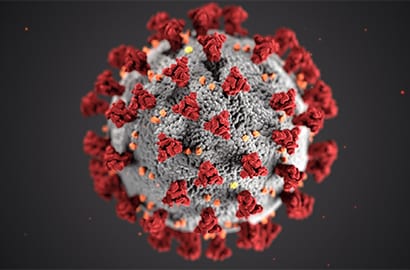COVİD 19
The novel coronavirus disease (COVID-19) was first identified as a virus on January 13, 2020, through research conducted on a group of patients in the late December in the province of Wuhan, China, who exhibited respiratory symptoms such as fever, cough, and shortness of breath.
The outbreak was initially traced to individuals in the seafood and animal market in this region. Subsequently, it spread from person to person, reaching other cities in the Hubei province, including Wuhan, and extending to other provinces in the People's Republic of China and various countries worldwide.
Coronaviruses constitute a large virus family capable of causing illness in animals or humans. In humans, several coronaviruses are known to cause respiratory infections ranging from the common cold to more severe diseases such as Middle East Respiratory Syndrome (MERS) and Severe Acute Respiratory Syndrome (SARS). The novel coronavirus disease is caused by the SAR-CoV-2 virus.
Symptoms:
While there may be cases without symptoms, the most commonly encountered symptoms include fever, cough, and shortness of breath. Severe cases can lead to pneumonia, severe respiratory failure, kidney failure, and death.
Transmission:
The virus is primarily transmitted through respiratory droplets when an infected person coughs or sneezes. It can also spread by touching surfaces contaminated with the virus and then touching the face, eyes, nose, or mouth. Contact with the eyes, nose, or mouth with dirty hands is considered risky.
Groups at Higher Risk:
Information obtained about COVID-19 infection indicates that some individuals are at a higher risk of becoming more severely ill and developing serious symptoms.
- Approximately 80% of cases experience mild illness.
- About 20% of cases require treatment in hospital conditions.
- The disease tends to affect people aged 60 and above more severely.
People Most Affected by the Disease:
- Individuals aged 60 and above
- Individuals with serious chronic medical conditions:Heart disease
- Hypertension
- Diabetes
- Chronic respiratory diseases
- Cancer, etc.
- Healthcare workers
Children at Risk:
The disease appears to be rare and mild in children, with no reported deaths among children.
Pregnant Women at Risk:
There is limited scientific evidence regarding the severity of the disease in pregnant women with COVID-19. However, current evidence suggests that the severity of the disease in pregnant women after COVID-19 infection is similar to that in non-pregnant adults, and there is no data indicating adverse effects on the fetus during pregnancy. To date, there is no evidence of the transmission of COVID-19 from mother to baby during pregnancy.
Diagnosis:
Molecular tests for the diagnosis of COVID-19 are available in our country. The diagnostic test is only performed at the Public Health General Directorate National Virology Reference Laboratory and designated Public Health Laboratories.
Preventive Measures:
Avoiding travel abroad as much as possible is recommended. In cases where international travel is necessary, the following rules should be followed:
Basic principles recommended to reduce the general risk of respiratory infections are applicable to COVID-19. These include:
- Paying attention to hand hygiene by washing hands with soap and water for at least 20 seconds or using alcohol-based hand sanitizer when soap and water are not available. There is no need to use antiseptic or antibacterial soap; regular soap is sufficient.
- Avoiding touching the face, nose, eyes, or mouth with unwashed hands.
- Avoiding contact with sick individuals (if possible, staying at least 1 meter away).
- Cleaning hands frequently, especially after direct contact with sick individuals or their surroundings.
- Avoiding unnecessary visits to healthcare centers and minimizing contact with other patients if a visit is necessary.
- Covering the mouth and nose with a disposable tissue or the inner elbow when coughing or sneezing. If tissues are not available, using the inner elbow is recommended. If in crowded places, wearing a medical mask and minimizing entry is advised.
- Avoiding the consumption of raw or undercooked animal products, and preferring well-cooked foods.
- Avoiding high-risk areas such as farms, live animal markets, and places where animals are slaughtered.
- If symptoms of respiratory infection occur within 14 days after travel, wearing a mask and seeking medical attention at the nearest healthcare facility, providing information about travel history to the doctor.
























![[LIVE] Engage2Earn: McEwen boost for Rob Mitchell](https://cdn.bulbapp.io/frontend/images/c798d46f-d3b8-4a66-bf48-7e1ef50b4338/1)





























